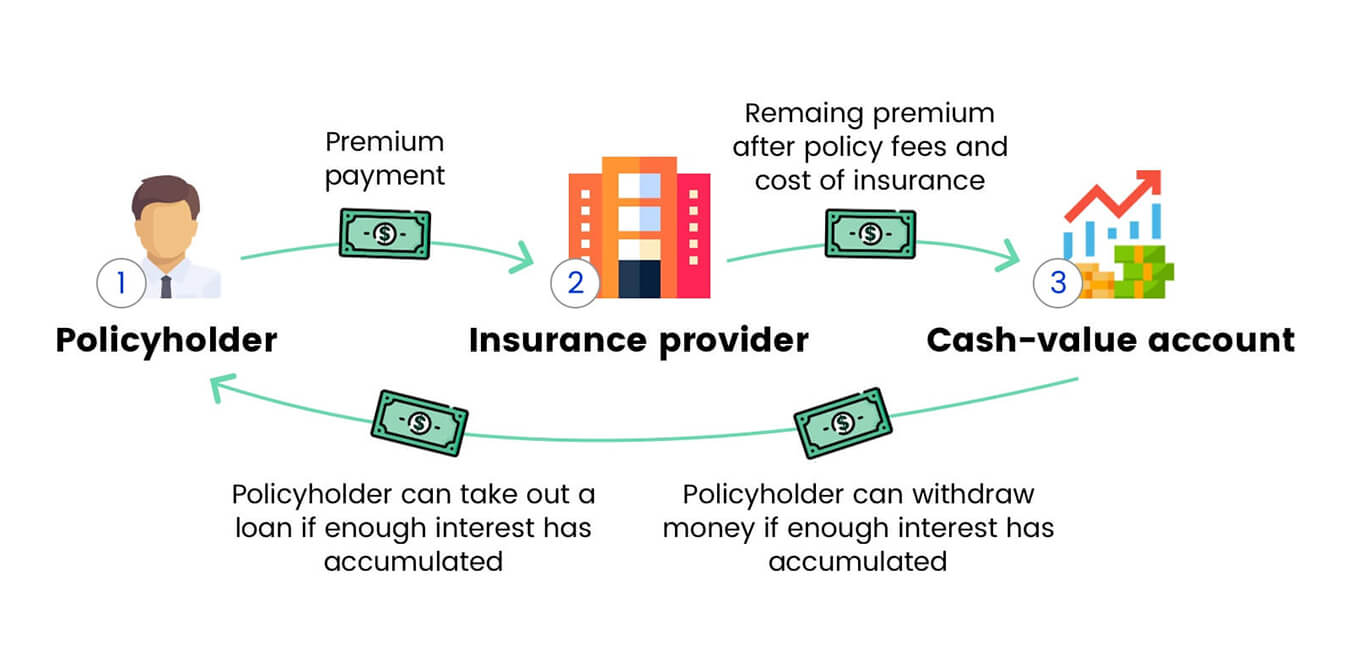Home>Finance>Why Are Car Loans Always Secured With Collateral?


Finance
Why Are Car Loans Always Secured With Collateral?
Published: February 17, 2024
Learn why car loans are typically secured with collateral and how it impacts your finances. Understand the importance of collateral in the world of finance.
(Many of the links in this article redirect to a specific reviewed product. Your purchase of these products through affiliate links helps to generate commission for LiveWell, at no extra cost. Learn more)
Table of Contents
Introduction
Understanding the Role of Collateral in Car Loans
When it comes to financing a car, the concept of collateral is of paramount importance. Whether you’re purchasing a brand-new vehicle or opting for a used car, the lender typically requires collateral to secure the loan. This practice is deeply ingrained in the lending process and serves as a safeguard for both the lender and the borrower. Understanding why car loans are almost always secured with collateral is crucial for anyone considering an auto loan. Let’s delve into the intricacies of this financial practice to gain a comprehensive understanding of its significance.
Car loans are a common form of financing, allowing individuals to purchase vehicles without paying the full amount upfront. However, unlike personal loans that may not require collateral, car loans are almost always secured by the vehicle being financed. This means that if the borrower fails to make payments as agreed, the lender has the right to repossess the vehicle as a form of collateral. The utilization of collateral in car loans is not arbitrary; it is a strategic measure that serves various purposes for both lenders and borrowers.
Understanding Car Loans
Car loans, also known as auto loans, are financial products specifically designed to help individuals purchase vehicles. These loans allow borrowers to spread the cost of a vehicle over a set period, making it more affordable to own a car. When obtaining a car loan, borrowers agree to repay the borrowed amount, plus interest, over a predetermined period. The terms of the loan, including the interest rate and repayment schedule, are established based on the borrower’s creditworthiness and the lender’s policies.
Car loans can be obtained from various sources, including banks, credit unions, and online lenders. Additionally, many car dealerships offer financing options to streamline the vehicle purchasing process. It’s essential for borrowers to compare different loan offers and select the most favorable terms that align with their financial capabilities.
When applying for a car loan, borrowers are typically required to provide information about their income, employment, and credit history. Lenders use this information to assess the borrower’s ability to repay the loan and determine the level of risk associated with the lending arrangement. Based on this evaluation, the lender decides whether to approve the loan application and establishes the terms, including the loan amount, interest rate, and repayment period.
Car loans come with various structures, including traditional installment loans and lease agreements. With traditional loans, the borrower takes ownership of the vehicle upon purchase and repays the loan over time. On the other hand, lease agreements allow individuals to use a vehicle for a specified period, typically 2 to 4 years, with the option to purchase the vehicle at the end of the lease term.
The Importance of Collateral
Collateral plays a pivotal role in the context of car loans, providing a layer of security for lenders as they extend financing to borrowers. In the case of car loans, the vehicle being purchased serves as the collateral, effectively mitigating the lender’s risk. By using the vehicle as collateral, the lender gains a form of assurance that the borrower will fulfill their repayment obligations. This security significantly increases the lender’s confidence in approving the loan, particularly for individuals with varying credit backgrounds.
From the lender’s perspective, collateral serves as a safeguard in the event of borrower default. If the borrower fails to make payments as agreed, the lender has the legal right to repossess the vehicle, thereby recouping a portion of the outstanding debt. This ability to seize the collateral acts as a form of recourse for the lender, minimizing potential financial losses resulting from non-payment.
Moreover, the presence of collateral often allows borrowers to access more favorable loan terms, including lower interest rates and extended repayment periods. Lenders are generally more inclined to offer competitive terms when the loan is secured with collateral, as the reduced risk warrants a more accommodating lending approach. As a result, borrowers may benefit from lower overall borrowing costs and increased flexibility in managing their repayment obligations.
Furthermore, the use of collateral in car loans can expand access to financing for individuals who may have limited credit history or lower credit scores. By pledging the vehicle as collateral, borrowers can demonstrate their commitment to the loan, potentially offsetting the impact of credit-related concerns. This aspect can be particularly advantageous for individuals seeking to establish or rebuild their credit profiles while securing the means to acquire essential transportation.
Risk Management for Lenders
For lenders, the utilization of collateral in car loans serves as a fundamental risk management strategy. By requiring collateral, lenders can mitigate the inherent risks associated with extending funds to borrowers, particularly those with diverse financial backgrounds. The presence of collateral provides a tangible asset that can be reclaimed in the event of borrower default, offering a degree of protection for the lender’s investment.
When evaluating loan applications, lenders assess the creditworthiness of borrowers to gauge the likelihood of timely repayment. However, even with thorough assessments, there is always a level of uncertainty regarding future financial stability and unforeseen circumstances that may impact a borrower’s ability to meet their obligations. Collateral acts as a safeguard in such scenarios, offering a tangible means for the lender to recover potential losses.
From a risk management standpoint, the use of collateral allows lenders to extend financing to a broader spectrum of borrowers, including those with limited credit history or past credit challenges. This expanded accessibility can foster financial inclusion, enabling individuals who may not meet traditional lending criteria to secure car loans by leveraging the value of the vehicle being financed.
Furthermore, collateralization of car loans provides lenders with a mechanism to reduce the overall risk exposure associated with their lending portfolios. By diversifying the types of assets securing their loans, lenders can enhance the resilience of their lending activities and minimize the impact of potential defaults. This risk diversification contributes to a more robust and balanced lending framework, bolstering the lender’s ability to navigate economic fluctuations and changing market dynamics.
Additionally, the presence of collateral facilitates streamlined recovery processes in the event of borrower default. Should a borrower fail to fulfill their repayment obligations, the lender can initiate the repossession of the vehicle, thereby mitigating prolonged financial losses and expediting the resolution of delinquent accounts. This efficient recourse mechanism underscores the importance of collateral in fortifying the lender’s risk management strategies.
Benefits for Borrowers
While collateral is primarily designed to safeguard lenders, its presence in car loans can also yield significant benefits for borrowers. The utilization of collateral often translates into advantages that enhance the borrowing experience and provide valuable opportunities for individuals seeking auto financing.
One of the key benefits for borrowers is the potential access to more favorable loan terms. Securing a car loan with collateral, typically the vehicle itself, can lead to lower interest rates and reduced borrowing costs. Lenders are generally more inclined to offer competitive terms when the loan is collateralized, recognizing the decreased risk associated with the arrangement. As a result, borrowers may enjoy more affordable monthly payments and overall savings throughout the loan term.
Moreover, the presence of collateral can expand borrowing opportunities for individuals with varying credit profiles. For those with limited credit history or lower credit scores, securing a car loan with collateral can serve as a viable pathway to obtain financing. By leveraging the value of the vehicle, borrowers can demonstrate their commitment to the loan, potentially offsetting the impact of credit-related concerns and accessing the funds needed to purchase a vehicle.
Furthermore, collateralized car loans often offer extended repayment periods, providing borrowers with increased flexibility in managing their financial obligations. The ability to spread out the repayment over a longer term can result in more manageable monthly payments, aligning with the borrower’s budget and financial circumstances. This enhanced flexibility can be particularly advantageous for individuals seeking to balance their transportation needs with their overall financial responsibilities.
Additionally, the presence of collateral in car loans can contribute to the establishment or improvement of the borrower’s credit history. By making timely payments and fulfilling the loan agreement, borrowers can positively impact their credit profiles, laying the groundwork for future financial opportunities. This aspect underscores the potential long-term benefits of collateralized car loans beyond the immediate financing need.
Conclusion
In conclusion, the integration of collateral in car loans serves as a pivotal component of the lending process, offering multifaceted advantages for both lenders and borrowers. The use of collateral provides lenders with a robust risk management framework, allowing for expanded lending opportunities and enhanced portfolio resilience. By securing car loans with collateral, lenders can extend financing to a diverse range of borrowers, mitigate potential losses, and streamline the recovery process in the event of default.
For borrowers, the presence of collateral in car loans presents valuable opportunities, including access to more favorable loan terms, increased borrowing accessibility, and enhanced flexibility in managing repayment obligations. The utilization of collateral can empower individuals to secure the funding needed to purchase vehicles, establish or rebuild their credit profiles, and navigate their financial responsibilities with greater ease.
Ultimately, the role of collateral in car loans underscores the symbiotic relationship between risk management and borrower empowerment. By leveraging collateral as a strategic financial tool, lenders can foster inclusive lending practices while safeguarding their investments. Simultaneously, borrowers can leverage collateralized car loans to fulfill their transportation needs, improve their financial standing, and embark on a path toward long-term financial well-being.














